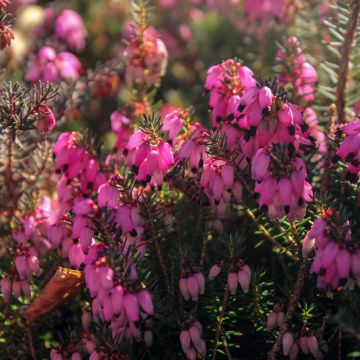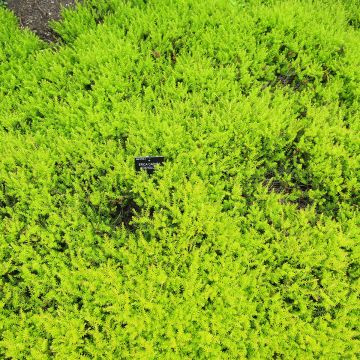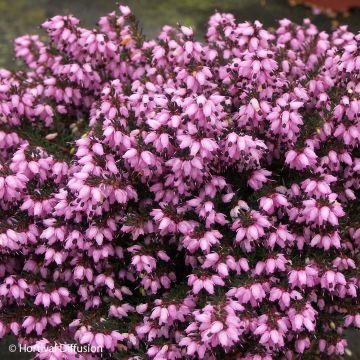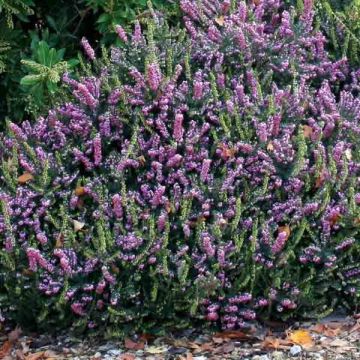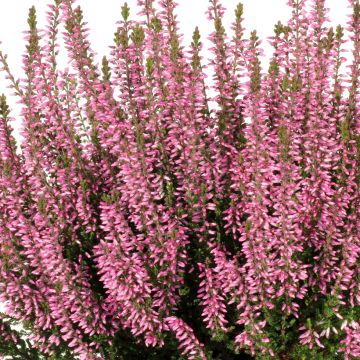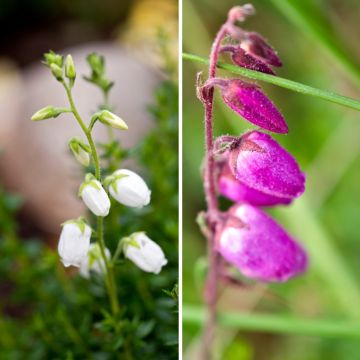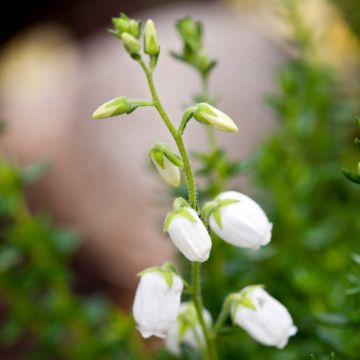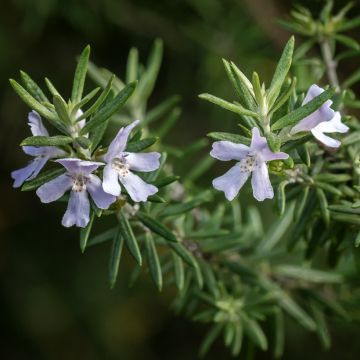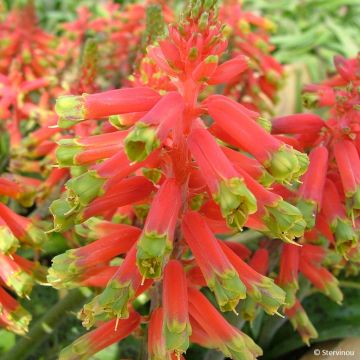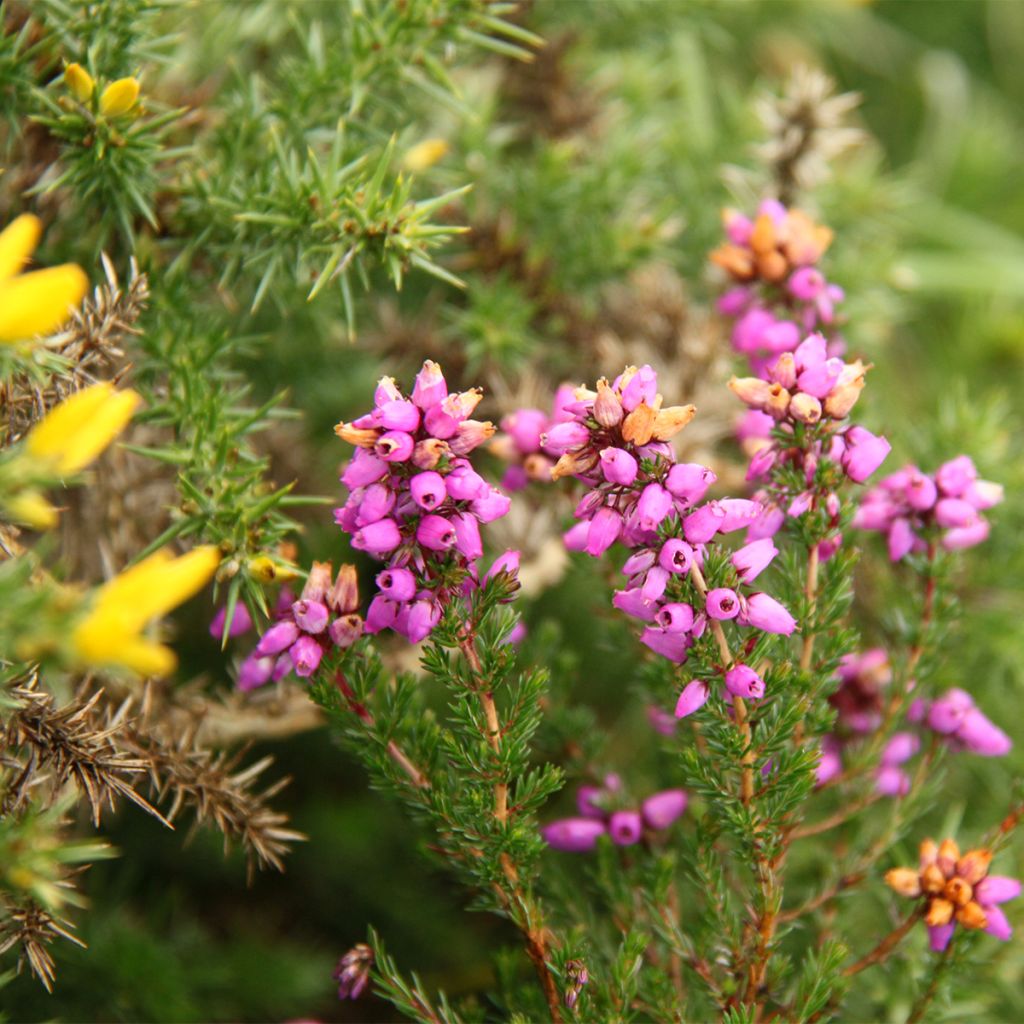

Erica cinerea - Winter Heath


Erica cinerea - Winter Heath
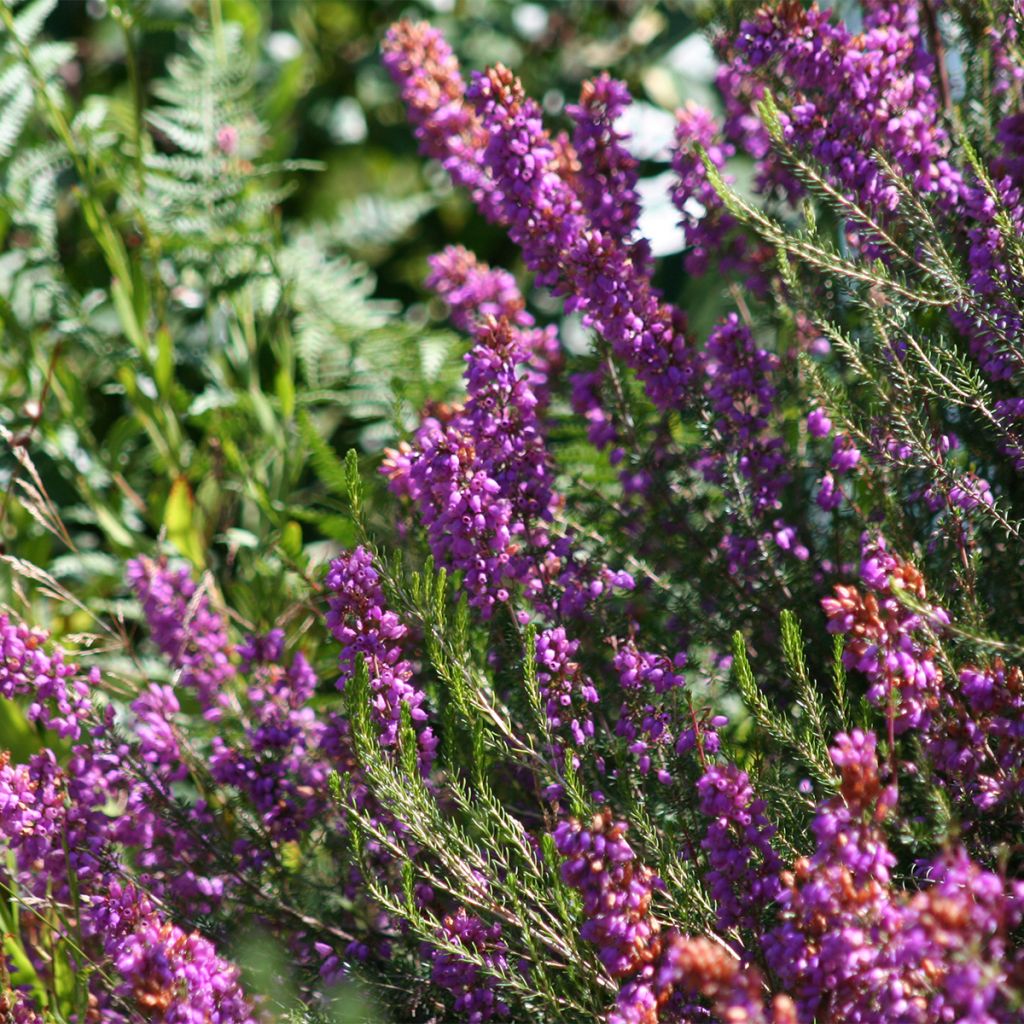

Erica cinerea - Winter Heath
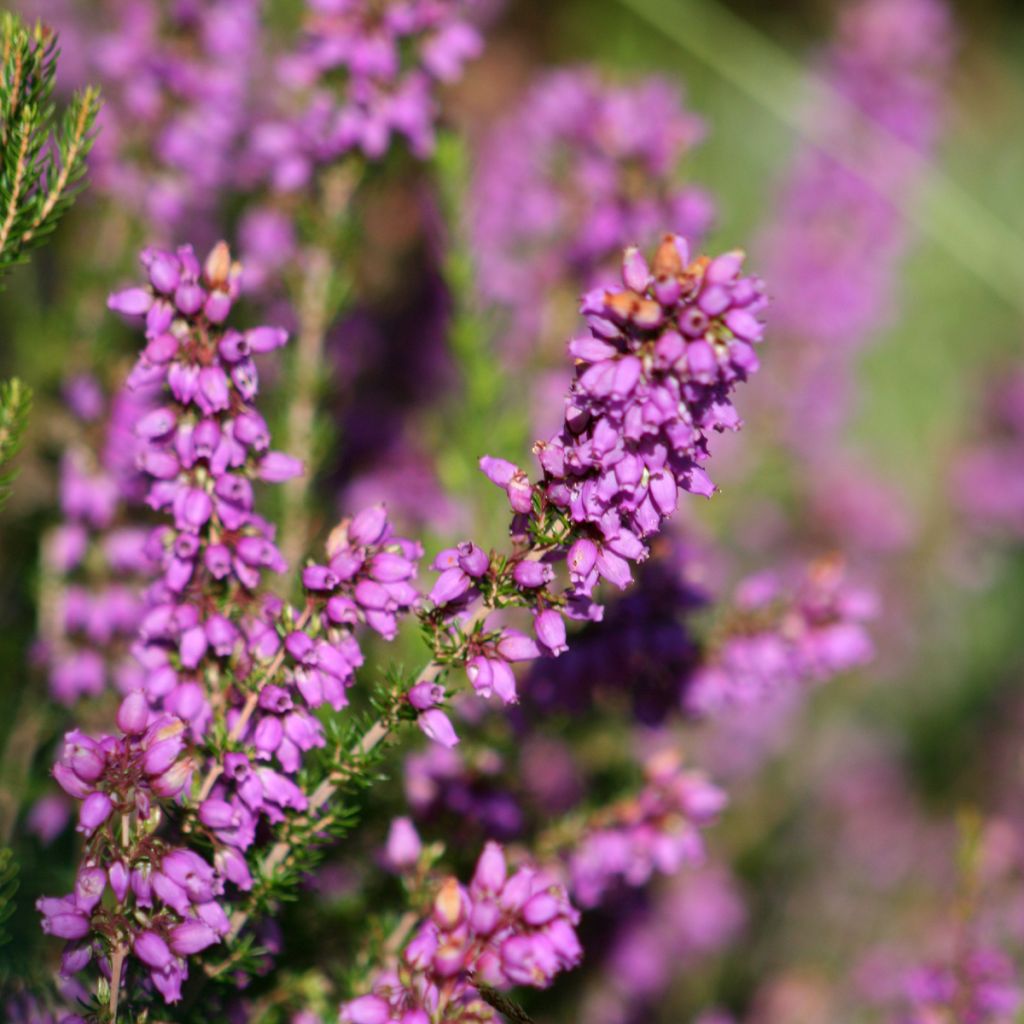

Erica cinerea - Winter Heath


Erica cinerea - Winter Heath
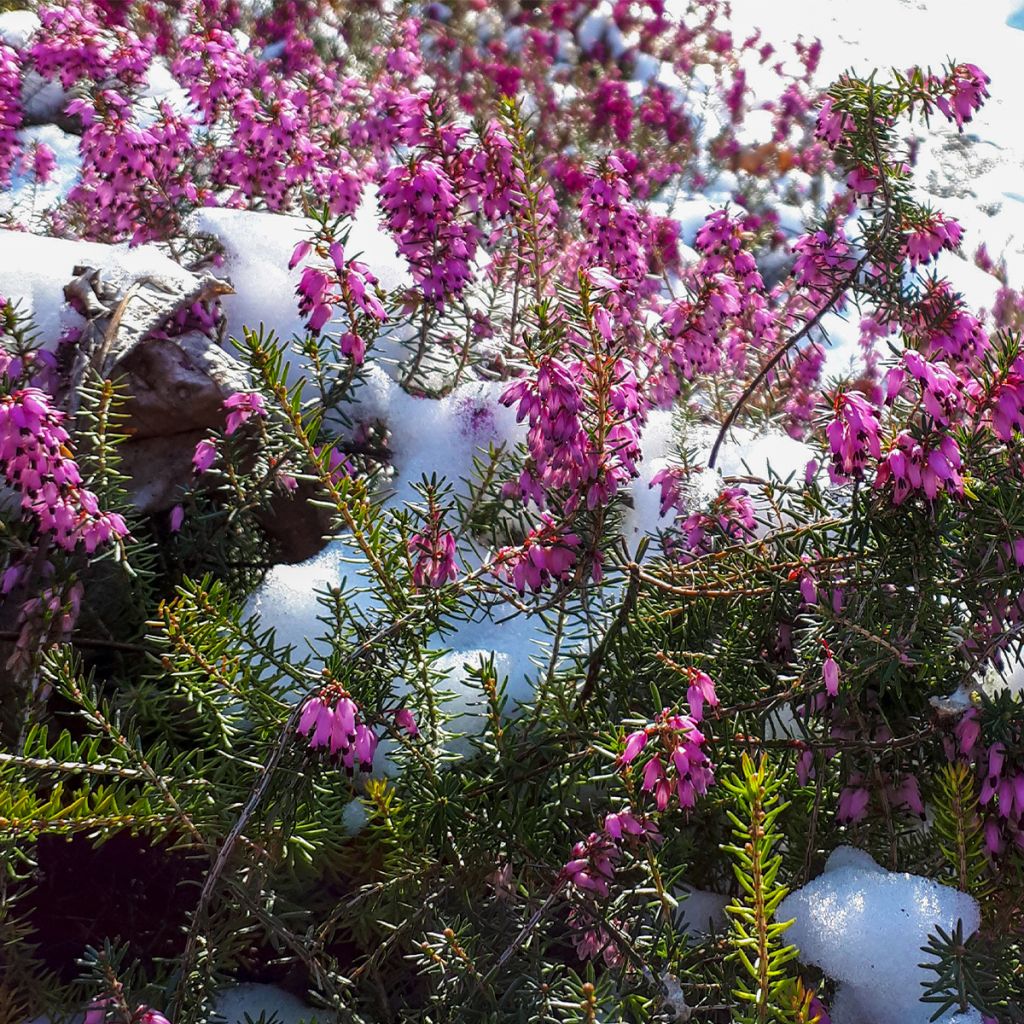

Erica cinerea - Winter Heath


Erica cinerea - Winter Heath


Erica cinerea - Winter Heath
Erica cinerea - Winter Heath
Erica cinerea
Bell Heather, Black heath, Carlin Heather, Twisted heath, Scotch Heather
Why not try an alternative variety in stock?
View all →This plant carries a 24 months recovery warranty
More information
We guarantee the quality of our plants for a full growing cycle, and will replace at our expense any plant that fails to recover under normal climatic and planting conditions.
From €5.90 for pickup delivery and €6.90 for home delivery
Express home delivery from €8.90.
Does this plant fit my garden?
Set up your Plantfit profile →
Description
Erica cinerea is the most common heather species in Europe. It is a low and spreading undershrub, forming a tuft of slender stems, adorned with evergreen foliage shaped like small needles. From June to October, it produces an abundance of terminal clusters of swollen pinkish-purple bell-shaped flowers, highly attractive to bees. Its spreading flowering, evergreen foliage, and almost carpet-like habit make it an ideal ground cover for moderately rich, acidic, and well-drained soils.
Erica cinerea belongs to the Ericaceae family. The species is native to western Europe, where it grows in heathland and siliceous woods. It forms a low and dense bush with prostrate and twisted vegetation, reaching a maximum height of 50 cm (19.7 in), with a spread of 80 cm (31.5 in). The stiff, low, and spreading tips of its twisted branches straighten up, revealing an ash-coloured and pubescent bark, covered with tiny linear medium green, glabrous leaves. Its small bell-shaped flowers measuring 4 mm to 5 mm (0.2 in to 0.2 in) long are arranged in whorls, grouped in small elongated clusters at the top of leafy stems. They appear in the middle of summer and last until October and are incredibly popular with bees. The evergreen foliage is medium green and glossy, becoming slightly bronze in autumn.
It will be happy in non-burning sun, alongside other heathers whose flowering will take over: Erica carnea, Erica darleyensis, Erica vagans. To add a touch of whimsy to the somewhat austere expanses of their foliage, they can be planted with some grasses that will lighten their mass: Deschampsia cespitosa 'Northern Lights', Deschampsia flexuosa 'Tatra Gold', Molinia caerulea 'Variegata', Molinia caerulea 'Moorhexe'. They can also be mixed in a low and shady border with bearberry, cassiope, or Lithodora fruticosa. In acidic soil, heathers form beautiful carpets at the base of larger shrubs that they dress: mountain laurel, rhododendrons, brooms, deciduous azaleas, burnet rose. Erica cinerea is also a medicinal plant, used for its antiseptic, urinary, and diuretic properties, as well as to eliminate excess uric acid.
While heathers, especially those of the Erica genus, are associated with the humid Atlantic heathlands of the oceanic north-facing coastline (Brittany, Ireland, Scotland), there are also heathers adapted to dry climates and limestone soils in the Mediterranean region. However, one of the richest areas in heather species is located far away, in South Africa. In the Cape region, there is a vegetation formation on acidic soil, equivalent to Mediterranean scrub vegetation, called Fynbos, which includes nearly 625 heather species out of the 740 that exist worldwide.
Report an error about the product description
Erica cinerea - Winter Heath in pictures




Plant habit
Flowering
Foliage
Botanical data
Erica
cinerea
Ericaceae
Bell Heather, Black heath, Carlin Heather, Twisted heath, Scotch Heather
Western Europe
Other Heather
Planting and care
Erica cinerea prefers fairly fertile soil, even if it can tolerate poor terrain. The soil should be light, sandy, slightly acidic, neutral to limestone, moist but well-drained. Plant in autumn or spring, without burying the collar too much. This plant appreciates non-burning full sun or partial shade. During the first two years, carefully weed around the base. Adapted to dry environments, the roots of heather plants are highly branched in the soil and prevent the establishment of other species nearby once they are well established. In case of prolonged drought, mulch the base to maintain some moisture.
Prune the clumps to mid-height, just after flowering, from a young age, which will allow the clumps to remain dense while producing new foliage. It may be useful to protect the foliage from severe cold by covering the plants with conifer branches. Remove this protection at the end of winter. If, however, a part of the plant has frozen, prune in March, and it will regrow its branches.
Planting period
Intended location
Care
This item has not been reviewed yet - be the first to leave a review about it.
Evergreen shrubs
Haven't found what you were looking for?
Hardiness is the lowest winter temperature a plant can endure without suffering serious damage or even dying. However, hardiness is affected by location (a sheltered area, such as a patio), protection (winter cover) and soil type (hardiness is improved by well-drained soil).

Photo Sharing Terms & Conditions
In order to encourage gardeners to interact and share their experiences, Promesse de fleurs offers various media enabling content to be uploaded onto its Site - in particular via the ‘Photo sharing’ module.
The User agrees to refrain from:
- Posting any content that is illegal, prejudicial, insulting, racist, inciteful to hatred, revisionist, contrary to public decency, that infringes on privacy or on the privacy rights of third parties, in particular the publicity rights of persons and goods, intellectual property rights, or the right to privacy.
- Submitting content on behalf of a third party;
- Impersonate the identity of a third party and/or publish any personal information about a third party;
In general, the User undertakes to refrain from any unethical behaviour.
All Content (in particular text, comments, files, images, photos, videos, creative works, etc.), which may be subject to property or intellectual property rights, image or other private rights, shall remain the property of the User, subject to the limited rights granted by the terms of the licence granted by Promesse de fleurs as stated below. Users are at liberty to publish or not to publish such Content on the Site, notably via the ‘Photo Sharing’ facility, and accept that this Content shall be made public and freely accessible, notably on the Internet.
Users further acknowledge, undertake to have ,and guarantee that they hold all necessary rights and permissions to publish such material on the Site, in particular with regard to the legislation in force pertaining to any privacy, property, intellectual property, image, or contractual rights, or rights of any other nature. By publishing such Content on the Site, Users acknowledge accepting full liability as publishers of the Content within the meaning of the law, and grant Promesse de fleurs, free of charge, an inclusive, worldwide licence for the said Content for the entire duration of its publication, including all reproduction, representation, up/downloading, displaying, performing, transmission, and storage rights.
Users also grant permission for their name to be linked to the Content and accept that this link may not always be made available.
By engaging in posting material, Users consent to their Content becoming automatically accessible on the Internet, in particular on other sites and/or blogs and/or web pages of the Promesse de fleurs site, including in particular social pages and the Promesse de fleurs catalogue.
Users may secure the removal of entrusted content free of charge by issuing a simple request via our contact form.
The flowering period indicated on our website applies to countries and regions located in USDA zone 8 (France, the United Kingdom, Ireland, the Netherlands, etc.)
It will vary according to where you live:
- In zones 9 to 10 (Italy, Spain, Greece, etc.), flowering will occur about 2 to 4 weeks earlier.
- In zones 6 to 7 (Germany, Poland, Slovenia, and lower mountainous regions), flowering will be delayed by 2 to 3 weeks.
- In zone 5 (Central Europe, Scandinavia), blooming will be delayed by 3 to 5 weeks.
In temperate climates, pruning of spring-flowering shrubs (forsythia, spireas, etc.) should be done just after flowering.
Pruning of summer-flowering shrubs (Indian Lilac, Perovskia, etc.) can be done in winter or spring.
In cold regions as well as with frost-sensitive plants, avoid pruning too early when severe frosts may still occur.
The planting period indicated on our website applies to countries and regions located in USDA zone 8 (France, United Kingdom, Ireland, Netherlands).
It will vary according to where you live:
- In Mediterranean zones (Marseille, Madrid, Milan, etc.), autumn and winter are the best planting periods.
- In continental zones (Strasbourg, Munich, Vienna, etc.), delay planting by 2 to 3 weeks in spring and bring it forward by 2 to 4 weeks in autumn.
- In mountainous regions (the Alps, Pyrenees, Carpathians, etc.), it is best to plant in late spring (May-June) or late summer (August-September).
The harvesting period indicated on our website applies to countries and regions in USDA zone 8 (France, England, Ireland, the Netherlands).
In colder areas (Scandinavia, Poland, Austria...) fruit and vegetable harvests are likely to be delayed by 3-4 weeks.
In warmer areas (Italy, Spain, Greece, etc.), harvesting will probably take place earlier, depending on weather conditions.
The sowing periods indicated on our website apply to countries and regions within USDA Zone 8 (France, UK, Ireland, Netherlands).
In colder areas (Scandinavia, Poland, Austria...), delay any outdoor sowing by 3-4 weeks, or sow under glass.
In warmer climes (Italy, Spain, Greece, etc.), bring outdoor sowing forward by a few weeks.

































